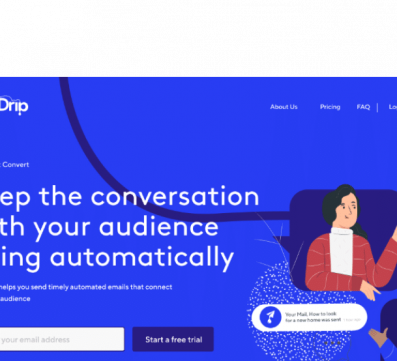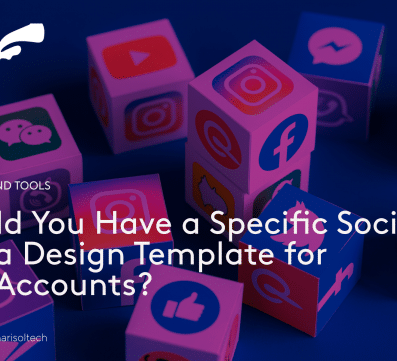
Product managers are constantly looking for ways to reduce developmental and operational costs without compromising quality, achieving a higher return on investment.
Usually, reducing costs means compromising on something else. However, creating a minimum viable product (MVP) might help you retain quality while reducing costs.
MVP’s significant benefits include cutting costs, minimizing risks, and getting user feedback without spending a fortune.
Rather than spending months or years developing a fully featured product and later discovering it doesn’t meet your audience’s needs, an MVP allows product developers, entrepreneurs, and business owners to test core features quickly and efficiently.
Understanding the full spectrum of benefits of MVP can be the difference between costly product failures and market-leading successes for startups and established businesses.
RELATED BLOG POSTS
- 5 ESSENTIAL ELEMENTS OF UX DESIGN IN WEBSITE DEVELOPMENT
- 9 EXPERT TIPS TO OPTIMIZE YOUR WEBSITE’S MOBILE RESPONSIVENESS
- 7 TOP REASONS TO HIRE AFRICAN SOFTWARE DEVELOPERS – Charisol
- 5 EFFECTIVE CUSTOMER RETENTION STRATEGIES FOR BUSINESSES
What Is an MVP in Product Management?
In product management, MVP stands for Minimum Viable Product.
A minimum viable product is the basic version of a product that includes only the essential features, which is intended for testing and gathering feedback.
A minimum viable product focuses only on the essential features while withholding additional or supportive features that aren’t crucial for the product’s core purpose. Contrary to what some people may think, a minimum viable product is still a real product, not just a prototype.
Difference Between an MVP and a Full Product Launch
The significant difference between a minimum viable product and a full product launch is the level of development and the goal.
An MVP is a stripped-down version of the product, containing only the essential features that reflect its main value proposition. Its primary goal is to determine whether the product will be acceptable to the public and gather user feedback with minimal cost.
A minimum viable product is usually released to a select group of people (focus group). This is similar to beta testing for phone applications.
In contrast, a full product launch is the finished work. It contains all the primary and supportive features, goes through the entire development process, and is released to a broader audience.
Key Benefits of Using MVP in Product Management
Here are some key benefits of MVP (minimum viable product) development:
1. Reduces development cost
One of the most significant benefits of MVP is its ability to increase cost efficiency by reducing development costs.
Because an MVP is not the complete product version, the cost of developing it is usually lower if you decide to build a single unit of the complete product.
With the MVP, you can validate your idea with a smaller budget first, and if the feedback is good, you can invest more money into creating the complete product.
2. Speeds up time to market
Since a minimum viable product has limited features and functions, the development phase is usually faster.
You can get your products into the hands of your users in record time.
This allows you to get timely feedback, revise your products, and develop the complete version before your competitors have time to create a comparable product.
Faster time to market also establishes you as the pioneer company and makes other competitors seem like copycats.

Photo by: Kaboompics.com on Pexels
3. Validates market demand
Another crucial benefit of MVP is its role in validating market demand.
By releasing a basic version of your product that addresses a specific market need, you can accurately evaluate your users’ interests and determine whether there’s a genuine need for your product’s solution.
The feedback you get can give you valuable insight into what the market wants and how your audience wants it.
This helps you avoid investing heavily in a product or its features that the market does not need.
4. Attracts early adopters and investors
Early adopters test new technologies and products before being widely available to the general public. They are like critics and are usually influential to people in their niche.
The benefits of MVP also extend to attracting these crucial stakeholders. Early adopters are drawn to innovative solutions and are willing to provide valuable feedback based on their use of the product and understanding of your target audience.
A well-executed MVP demonstrates your product’s potential (which is what early adopters look out for), making it easier to attract investors looking for promising ventures with validated market demand.
5. Allows for continuous improvements
Providing room for continuous improvement is another one of the benefits of MVP.
By releasing the version of your product idea that focuses on the major feature addressing a specific need, you can gather real-time data on how users interact with that product.
You get real-time insight into your users’ expectations, disappointments, and features they find most valuable. This helps you make informed decisions about what aspects of the product need improvement and how often you need to improve them.
By doing this, you are ensuring that your product evolves with the needs of your audience.
6. Reduces risk of product failure
As earlier stated, MVP validates market demands. This is crucial because it tells you what your target audience wants and helps you minimize the risk of building a product no one wants.
This way, your complete product will have a guaranteed chance of succeeding when it finally hits the market.
You can also avoid costly mistakes and adjust your strategies before major losses, saving time, money, resources, and headaches.
7. Helps to prioritize features that matter
One of the benefits of an MVP is a sharpened focus on essential features. By forcing you to identify your product’s core value proposition, an MVP helps you prioritize the most critical features for your users.
This ensures your development efforts are focused on delivering the most impactful functionalities, leading to a more efficient and effective product development process.
Mistakes to Avoid When Building an MVP
Some mistakes must be avoided in an MVP’s implementation because they can affect the efficiency and overall purpose of building a minimum viable product.
Here are some mistakes to avoid when building an MVP:
1. Overloading the MVP with too many features
The “minimum” in MVP is crucial. Adding excessive features defeats the purpose of creating a minimum viable product.
This mistake often stems from a fear of releasing something that seems “incomplete.” Instead of validating a single core idea, you end up testing a complex product, making it difficult to isolate what’s working and what’s not.
You should focus on the essential functions and features.
2. Choosing the wrong audience for testing
Testing your MVP with the wrong audience can lead to getting irrelevant feedback.
Consider demographics, psychographics, and user behaviors to ensure your test audience accurately represents your target market.
3. Ignoring user feedback and not implementing
The primary goal of an MVP is to gather valuable feedback. If you ignore or dismiss user input, you’re wasting a golden opportunity. User feedback should directly influence your development process.
Ensure a system is in place to gather, analyze, and act upon user feedback.

Photo by PNW Production on Pexels
Conclusion
Starting with an MVP is the best course of action if you want to launch a product correctly and effectively.
By embracing the benefits of MVP in product development and implementing this strategy, entrepreneurs can reduce developmental costs, increase time-to-market, and build products that genuinely address user needs rather than perceived wants.
Deciding on a single feature to amplify can be difficult, so it is important to work with a product development company that can help you validate your ideas and choose the most viable feature to amplify.
However, you have nothing to worry about because at Charisol, we have worked with several companies, helping them validate their product ideas and turn them into reality.
Are you ready to launch your product idea with an MVP? Send us a message today!
READ ALSO: 10 PROVEN PRACTICES FOR MOBILE APPLICATION DEVELOPMENT



